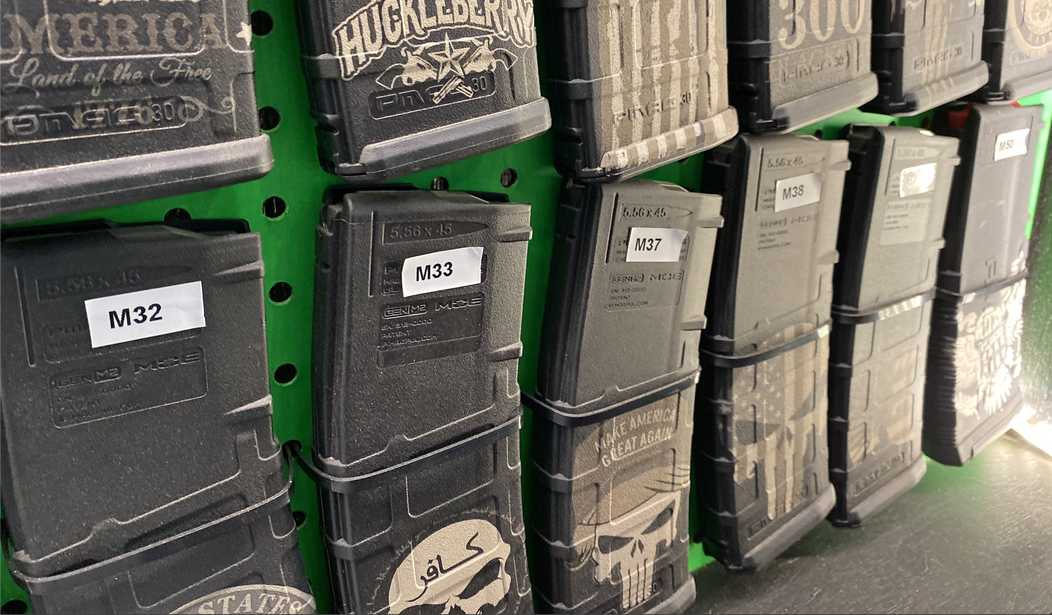A recent editorial over at The Trace does yeoman’s work to try to fortify arguments that are not outdated, but went previously ignored, pulling attention away from the bigger picture. There are a few issues with the reporting. For starters, the statistics. Second, and more importantly, The Trace is fixated on “common use,” and I hate to burst their bubble, common use doesn’t even need to be discussed.
Ever since the Supreme Court held, in 2008, that weapons in “common use” can’t be banned, lower courts have argued over what the term means. The National Shooting Sports Foundation, the gun industry’s trade group, has dragged questionable evidence into the now urgent debate.
The sweet irony to The Trace bringing up the common use argument from Heller, is that anti-civil liberty activists and judges never really paid much attention to it. Sure, it’s discussed in scores of lawsuits where liberty minded proponents brought it up, but hearing known anti-gun “reporting” try to massage a distorted view of what use is into the narrative is laughable.
The overton window of freedom prevailing has shifted. It’s as if The Trace et.al. are trying desperately to have the NYSRPA v. Bruen decision ignored, by zeroing in on these minute details of the cases. That is, “let’s just talk about the 2008 decision and what the case means through that lens,” rather than holistically admit defeat.
In June, NSSF research director Salam Fatohi testified in an Oregon lawsuit that sought to strike down a voter-approved ban on magazines capable of holding eleven or more rounds. His organization had submitted into evidence a chart suggesting that U.S. consumers had owned nearly 160 million such high-capacity magazines (HCMs) between 1990 and 2018. Gun interests have cited or introduced the chart in at least ten federal court cases since 2017, and the NSSF has referenced it in at least two friend-of-the court briefs, including one filed at the Supreme Court.
Fatohi explained that the figure had been extrapolated from federal firearm production and import data, as well as “industry estimates.” When questioned, however, Fatohi agreed that HCM possession — what the chart purported to show — and firearm production are distinct. Asked how the industry estimate was arrived at, Fatohi said he was unsure. He could not say how many NSSF member companies had been consulted. “So it could be two? It could be 20? It could be 200?” Satohi was asked. “Yes,” he responded.When U.S. District Court Judge Karin Immergut, a Republican Trump appointee, upheld Oregon’s ban in July, she ruled that “the NSSF Magazine Chart is entitled to little weight.”
Okay, where did the data come from? How did the NSSF get their information? The Trace noted that they reached out to Mark Oliva, the NSSF’s director of public affairs, and that he did not comment. The Trace further stated that Oliva referenced the publication’s connection to anti-civil liberty groups. No one can fault Oliva for telling The Trace to go pound sand – my words. They should know better, if these are still fresh conflicts – which they are – no comment can be made to mar their standing in court or their briefs. This was not a big “gotcha” moment.
Looking through some data that’s available, one study that was published this last May might offer some more insight on the topic. “2021 National Firearms Survey: Analysis of Magazine Ownership and Use” by William English, PhD, has scores of data from the “ the 2021 National Firearms Survey.”
This report extends analysis of the 2021 National Firearms Survey to examine magazine ownership and use in greater detail, reporting the distribution of magazine ownership and the types of magazines owned by state. The underlying survey data comes from the national survey of firearms ownership and use, which was conducted between February 17th and March 23rd, 2021 by the professional survey firm Centiment. This survey randomly polled a representative sample of approximately fifty-four thousand U.S. residents aged 18 and over, identifying over 16,000 gun owners who were asked detailed questions about their ownership and use of firearms.
The number we need to reach to satisfy the Trace should be 160 million “such high-capacity magazines.” Is that 160 million pistol magazines? 160 million rifle magazines? What is it? Not sure if that’s going to matter.
Aggregating Dr. English’s findings we look at this on a per person level. The study is not of how many actual magazines are out there, but rather the number of persons that own magazines of certain capacities. If a respondent says, “Yes, I own nine magazines that hold over ten rounds,” they are counted. Equal weight is given to the person that only owns one.
We must assume that an individual counts for a minimum of one, with no limits on where the cutoff is. Run-of-the-mill firearm owners might have three or more magazines just for one firearm. Where does that place so-called “superusers”?
As The Trace points out, there is no uniform definition for “high capacity magazine.” Most magazines that are being branded are in fact “standard capacity,” the amount the manufacturer includes with the firearm. The data that we’re going to look at are any magazines that hold over 10 rounds, the prevailing quantity that’s used in most states with limitations, and was the limit in the former federal ban.
The numbers are “estimated number of owners,” based on their statistical findings.
Estimated number of owners:
11+ round magazines: 39,326,441
11 to 15 round handgun magazines: 26,067,100
16+ round handgun magazines: 17,703,123
21+ round handgun magazines: 11,847,849
31+ round handgun magazines: 8,612,912
11 to 15 round rifle magazines: 18,102,573
16+ round rifle magazines: 20,244,926
21+ round rifle magazines: 16,473,381
31+ round rifle magazines: 10,220,706
Take that data and just give it a good read. The conclusion from the study says everything that needs to be said:
This report draws on 2021 National Firearms Survey data to examine magazine ownership and use across states and demographic groups. About half (48%) of firearms owners (39 million individuals) have owned magazines that hold more than 10 rounds, and 71% of such owners indicate that they have owned such magazines for defensive purposes (Home Defense or Defense Outside the Home).
Is 160 million magazines a bridge too far knowing that an estimated 39 million people own such magazines? The most popular firearm for self-defense and used in police/military forces in the world is the Glock 19. The Glock 19 comes brand new with three magazines. That gets us to 117 million if everyone owns just one handgun. If just over one third of the people being discussed own two pistols, we can handedly arrive at the 117 million mark.
We can speculate until the sun comes up. The average reader of Bearing Arms I’m sure owns more than 6 magazines that hold over ten rounds. Just a hunch. The Trace though would have us convinced otherwise. They seem more concerned about how the NSSF failed to respond to their query and how they responded while being examined while court was in session.
The magazine restriction conflict has already been GVRed by the Supreme Court, basically indicating that lower courts got it wrong in allowing a 10 round capacity limit to stand. The New Jersey case is a prime example and we should be hearing something about when arguments are going to occur over the next couple of months.
In a completely different complaint, the New Jersey Office of the Attorney General made this statement in a filing [emphasis added]:
To prevent gun violence, and to mitigate the risk of mass shootings, the State of New Jersey (“New. Jersey”) has long banned possession of large capacity ammunition magazines (“LCMs”)— firearm magazines capable of holding more than the standard number of rounds provided by the manufacturer.
This is something I pointed out back in 2021, noting:
What I would like to do is educate the New Jersey Office of Attorney General a little on their statement: “more than the standard number of rounds provided by the manufacturer”. Regardless of there being any intent to their ignorant definition in the complaint, I think it is important to note the following firearm makes and models, and their “standard capacity” magazines:
Beretta 92 FS comes standard with a 15 round magazine.
Glock 17 comes standard with a 17 round magazine.
Glock 19 comes standard with a 15 round magazine.
The list can go on and on. I point specifically to those makes and models as several police departments in New Jersey (and elsewhere worldwide) use them as their service firearms. Naturally in New Jersey the police are not held the to the same standard that the peasants are, and their “standard” capacity is not the ten rounds we’ve been “granted” by His Highness Phil Murphy.
That should put a nail in the coffin of New Jersey’s case. They admit when it’s convenient to them that a “large capacity magazine” is any magazine that has “more than the standard number of rounds provided by the manufacturer.”
Another unrelated case on butterfly knives also should highlight what “common use” is. Considering an item is not “dangerous and unusual” based on the number in circulation.
Looking at these arms strictly through Heller, arguments not utilizing NYSRPA v. Bruen do hold water. During examination, Judge Collins queried about the approximate number of such knives that were or are in private hands. Beck referenced an amicus brief from Knife Rights. The brief states that during a five year period in the 1980’s, several hundred thousand were sold to citizens. Judge Lee asked about the “dangerous and unusual” classification of arms, to which Beck noted the arm can’t be unusual if it’s borne for lawful purpose.
The Trace and every other anti-liberty entity can hang it up. If common use, through conjecture, could amount to “several hundred thousand,” then clearly millions are too.
We can postulate all we want to about the numbers and trying to mythbust the NSSF, or chastise The Trace, but there’s no need.
The simple question of whether or not this would be okay at the time of our founding needs to be asked. I’ll answer. No, at the time of our founding a magazine capacity limitation would not be embraced by our forefathers. The Trace, et.al. can deflect all they want. The statistics are there and clearly we can ask, “what difference does it make?” A hundred thousand? A million? 160 million? Or even an estimated 80 million magazines over the 30 round count.
The GVR from New Jersey alone should tip all these lower courts off that the limitation is unconstitutional. And there’s, “at the time of our founding…” Do we really need to discuss common use? I think not.








Join the conversation as a VIP Member